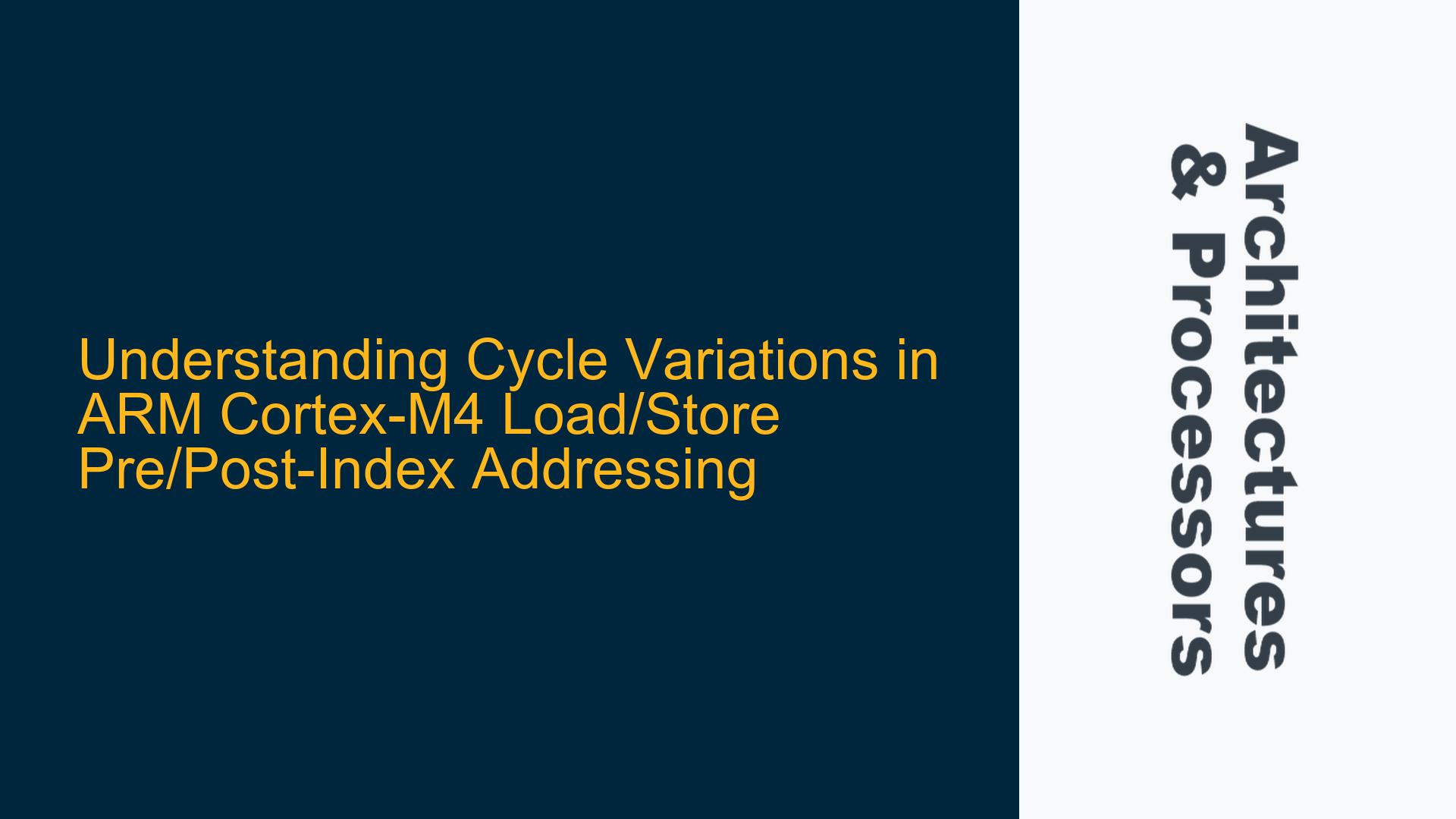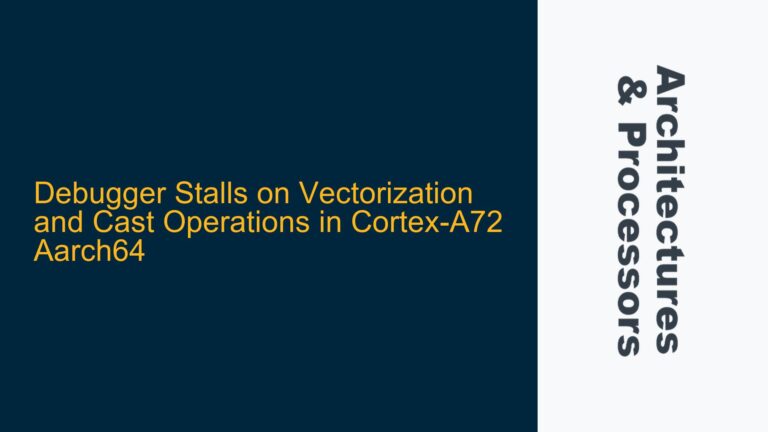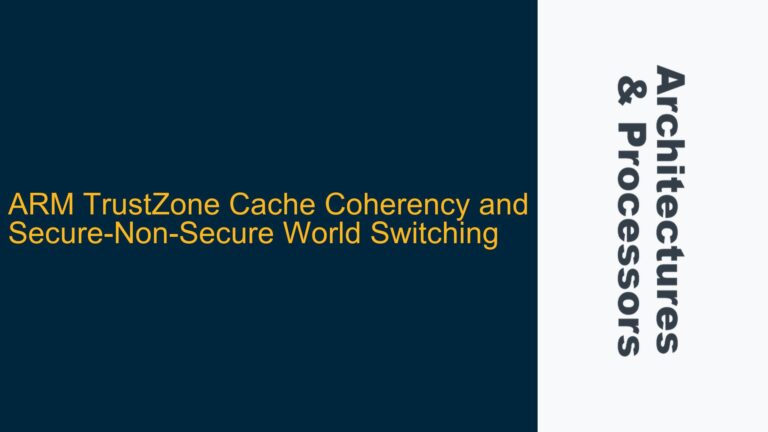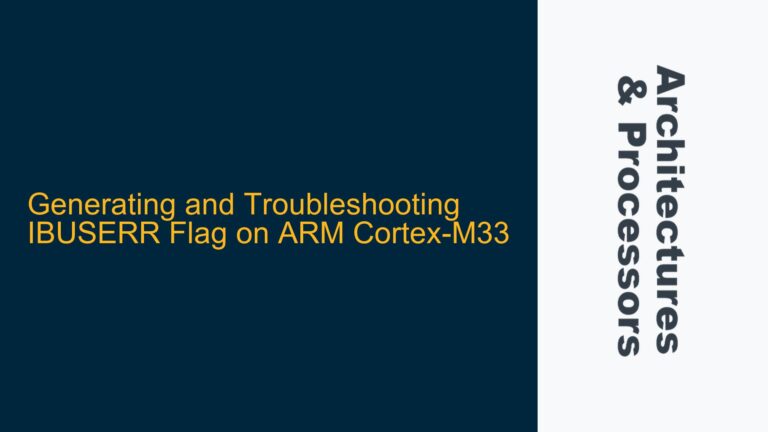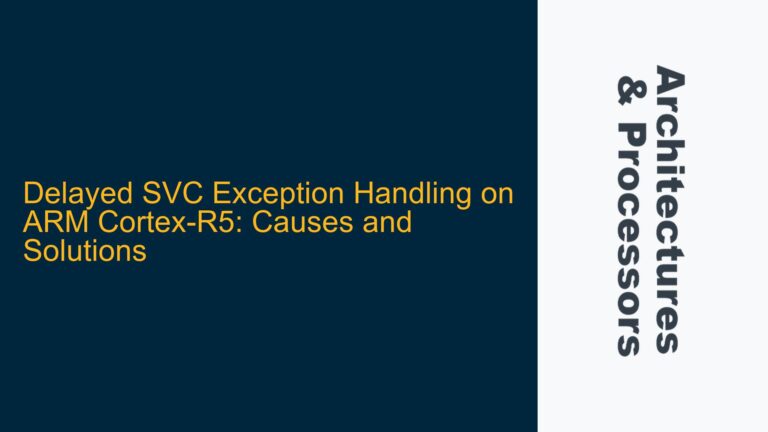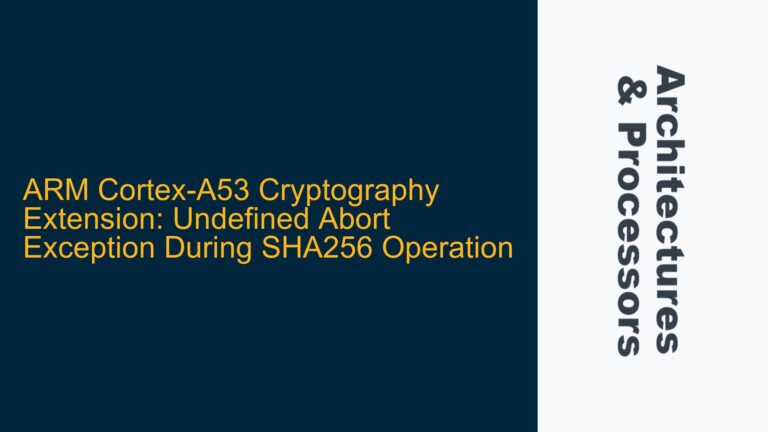ARM Cortex-M4 Load/Store Instruction Cycle Variations in Pre/Post-Index Addressing Modes
The ARM Cortex-M4 processor, a widely used microcontroller core, employs load and store instructions to move data between memory and registers. These instructions support various addressing modes, including pre-index and post-index addressing. Pre-index addressing calculates the memory address by adding an offset to the base register before accessing memory, while post-index addressing accesses memory using the base register and then updates the base register with the offset. Both modes are essential for efficient memory access patterns in embedded systems. However, variations in cycle counts during the execution of these instructions can arise due to factors such as memory alignment, offset values, and the specific addressing mode used. Understanding these variations is critical for optimizing performance in time-sensitive applications.
The Cortex-M4 Technical Reference Manual (TRM) provides foundational information on load/store timing, but the observed cycle counts often deviate from theoretical expectations due to hardware intricacies. For instance, unaligned memory accesses, specific offset values, and the interaction between the processor’s pipeline and memory subsystem can introduce additional cycles. This post delves into the root causes of these variations and provides actionable insights for troubleshooting and optimizing load/store operations in Cortex-M4 systems.
Memory Alignment, Offset Values, and Addressing Mode Impact on Cycle Counts
The cycle count variations observed in load/store instructions using pre-index and post-index addressing modes can be attributed to three primary factors: memory alignment, offset values, and the inherent differences between pre-index and post-index addressing modes. Each of these factors interacts with the Cortex-M4’s memory subsystem and pipeline architecture, leading to performance differences that may not be immediately apparent.
Memory Alignment
Memory alignment refers to whether the accessed address is a multiple of the data size being transferred. For example, a 32-bit load/store operation is aligned if the address is a multiple of 4. The Cortex-M4 processor is optimized for aligned memory accesses, and unaligned accesses can result in additional cycles. This is because unaligned accesses may require multiple memory transactions to retrieve or store the data. For instance, an unaligned 32-bit access might need two 16-bit accesses, effectively doubling the cycle count.
Offset Values
The offset value used in pre-index and post-index addressing modes can also influence cycle counts. Smaller offsets typically result in faster accesses because they are easier to compute and may align better with the processor’s memory access patterns. Larger offsets, especially those that cause the final address to cross memory boundaries, can introduce additional cycles. This is particularly true when the offset causes the address to span multiple cache lines or memory pages, triggering additional memory subsystem overhead.
Addressing Mode Differences
Pre-index and post-index addressing modes differ in how they calculate and update the base register. In pre-index addressing, the base register is updated with the offset before the memory access, while in post-index addressing, the base register is updated after the memory access. This difference can lead to variations in cycle counts due to the timing of register updates and their impact on the processor’s pipeline. For example, pre-index addressing might introduce a stall if the updated base register is immediately used in a subsequent instruction, whereas post-index addressing might avoid this stall by deferring the update.
Diagnosing and Resolving Load/Store Cycle Count Variations
To diagnose and resolve cycle count variations in load/store instructions, developers must systematically analyze the memory access patterns, alignment, and addressing modes used in their code. The following steps provide a structured approach to troubleshooting and optimizing these operations.
Step 1: Verify Memory Alignment
Begin by ensuring that all memory accesses are aligned to the data size being transferred. For example, 32-bit accesses should use addresses that are multiples of 4. Use debugging tools to inspect the addresses generated by load/store instructions and identify any unaligned accesses. If unaligned accesses are unavoidable, consider restructuring the data layout or using smaller data sizes to minimize the performance impact.
Step 2: Analyze Offset Values
Examine the offset values used in pre-index and post-index addressing modes. Smaller offsets are generally preferable, as they reduce the likelihood of crossing memory boundaries and triggering additional cycles. If large offsets are necessary, consider precomputing the addresses or using alternative addressing modes to avoid performance penalties.
Step 3: Evaluate Addressing Mode Selection
Assess whether pre-index or post-index addressing is more suitable for the specific use case. Pre-index addressing is often more efficient for sequential memory accesses, as it allows the base register to be updated in advance. Post-index addressing may be preferable for scattered accesses, as it defers the base register update until after the memory operation. Use profiling tools to measure the cycle counts for both modes and select the one that minimizes stalls and maximizes throughput.
Step 4: Optimize Cache Utilization
The Cortex-M4’s memory subsystem includes a cache that can significantly impact load/store performance. Ensure that frequently accessed data is cache-aligned and that the cache is properly configured for the application’s memory access patterns. Use cache management instructions, such as Data Synchronization Barriers (DSB) and Data Memory Barriers (DMB), to maintain cache coherency and prevent stalls caused by cache misses.
Step 5: Profile and Iterate
Finally, use profiling tools to measure the cycle counts for load/store instructions under different conditions. Compare the observed cycle counts with the theoretical values provided in the Cortex-M4 TRM and identify any discrepancies. Iterate on the optimization process by adjusting memory alignment, offset values, and addressing modes until the desired performance is achieved.
Implementing Best Practices for Load/Store Instruction Optimization
To achieve optimal performance in Cortex-M4 systems, developers should adopt best practices for implementing load/store instructions. These practices include aligning memory accesses, minimizing offset values, selecting the appropriate addressing mode, and leveraging the processor’s cache effectively.
Aligning Memory Accesses
Always align memory accesses to the data size being transferred. This can be achieved by carefully designing data structures and ensuring that pointers are properly aligned. For example, use the __align keyword in C/C++ to enforce alignment for critical data structures.
Minimizing Offset Values
Use small, constant offsets in load/store instructions to reduce address calculation overhead. If large offsets are necessary, consider using immediate values or precomputing the addresses to avoid performance penalties.
Selecting the Appropriate Addressing Mode
Choose between pre-index and post-index addressing based on the specific memory access pattern. Pre-index addressing is ideal for sequential accesses, while post-index addressing is better suited for scattered accesses. Use profiling tools to validate the choice and ensure optimal performance.
Leveraging the Cache
Configure the Cortex-M4’s cache to match the application’s memory access patterns. Use cache management instructions to maintain coherency and minimize stalls caused by cache misses. For example, use the DSB instruction to ensure that all memory operations are complete before proceeding.
Example: Optimizing a Memory Copy Routine
Consider a memory copy routine that uses load/store instructions to transfer data between two memory regions. The following steps illustrate how to optimize this routine using the best practices outlined above:
- Align the source and destination addresses to the data size being transferred.
- Use small, constant offsets in the load/store instructions to minimize address calculation overhead.
- Select pre-index addressing for sequential accesses, as it allows the base register to be updated in advance.
- Configure the cache to ensure that the source and destination regions are cache-aligned.
- Use profiling tools to measure the cycle counts and validate the optimization.
By following these steps, developers can achieve significant performance improvements in their Cortex-M4 systems and ensure that load/store instructions operate efficiently under all conditions.
In conclusion, cycle count variations in ARM Cortex-M4 load/store instructions using pre-index and post-index addressing modes are influenced by memory alignment, offset values, and addressing mode selection. By systematically diagnosing and resolving these factors, developers can optimize their code for maximum performance. Adopting best practices for memory access, cache utilization, and addressing mode selection ensures that load/store instructions operate efficiently, even in the most demanding embedded systems applications.
